Seven Tips to Prevent Your Shoes from Giving You Blisters
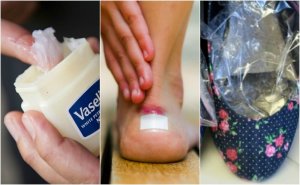
Blisters are painful lesions that often form at the top of your heels due to friction between your feet and your shoes.
They’re not a serious problem nor do they last long, but they can be so painful that you have to remove your shoes to stop them from hurting.
Blisters almost always occur when you have new shoes that need to adjust and mold to the shape of your feet. However, you need to be careful as they can become infected.
Fortunately, there are some solutions and preventative measures you can take to help protect your skin before any blisters develop.
Here, we give you seven tips you shouldn’t hesitate to use next time you’re wearing new or hard shoes.
1. Use moisturizer
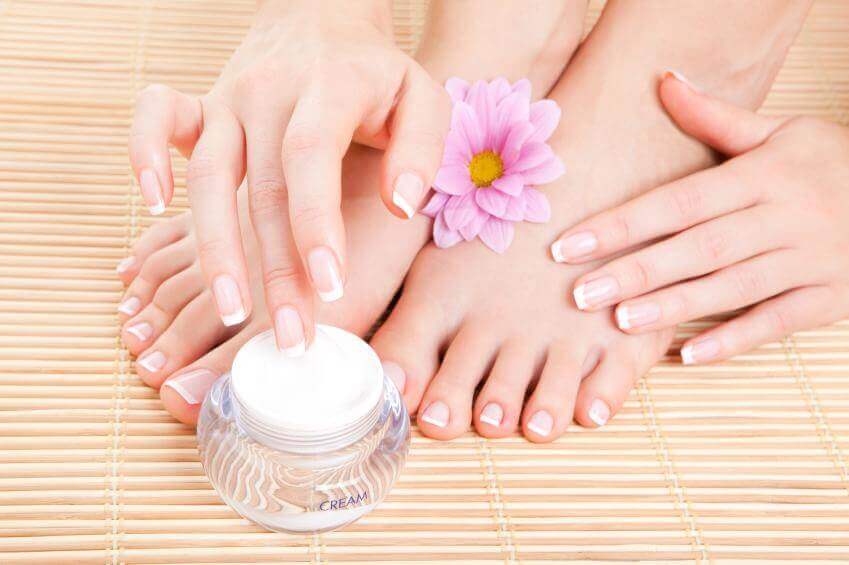
Applying a layer of moisturizer to both your heels and your shoes can prevent rubbing and stop your shoes from giving you blisters.
This product keeps your skin lubricated and prevents abrasions due to it being in contact with a rigid material.
Method
- Before putting your shoes on, apply a little moisturizer to the area that comes into contact with your heel.
- Rub it into the area of the skin at risk with gentle massaging motions.
See also: 4 Home Remedies to Treat Calluses
2. Apply aloe vera
The hydrating properties of aloe vera are useful to protect the skin from the abrasions it suffers from certain kinds of shoes.
It also has an antimicrobial effect which prevents the appearance of infections.
Method
- Apply a generous quantity of aloe vera gel to your heels.
- Rub it in with a gentle massage until it absorbs well.
- If the blister has already appeared, use it twice a day.
3. Coconut oil
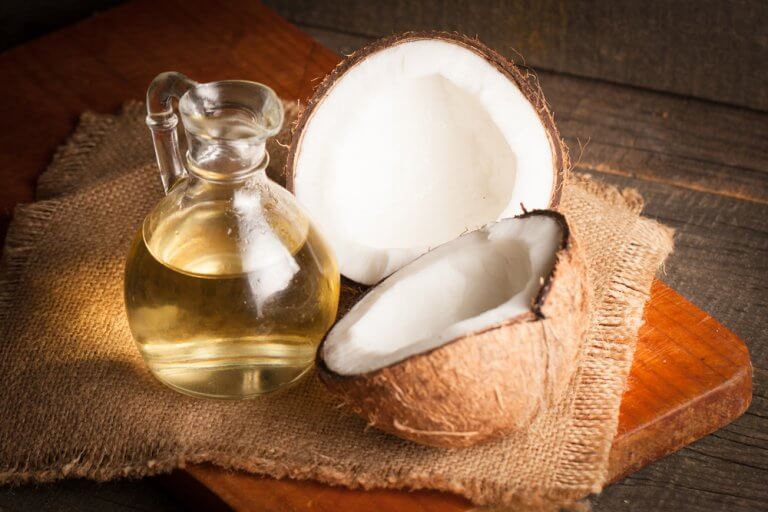
In the field of natural cosmetics, coconut oil is considered one of the best moisturizing creams. It hydrates cracked heels.
It also reduces rubbing by shoes that cause blisters. In fact, it’s a great remedy against any surface wound, because it protects against infections and helps with healing.
Method
- Rub the product onto the areas affected by rubbing.
- If you like, also put a little on the inside of the shoe to lubricate the material.
4. Talcum powder
Although we know it better for its ability to neutralize and prevent bad foot odor, talcum powder is also recommended to treat and prevent mycosis in people suffering from diabetic foot.
Talcum powder is also useful in preventing your shoes from giving you blisters on your heels. It absorbs the moisture caused by sweating, a factor that also contributes to the friction on your skin caused by wearing closed-in shoes.
Method
- Put a good quantity of talcum powder in the area of the heel of the shoe and on your skin.
5. Vaseline
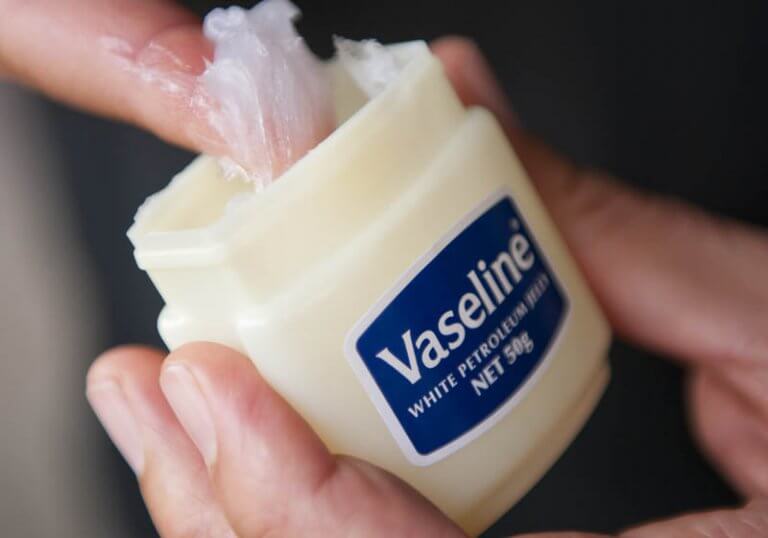
Moisturizing your feet with vaseline helps to keep your skin soft, and free of dead cells and injuries like blisters.
The oily texture of this product allows your foot to slide into your shoes more easily and also prevents your skin from being in constant contact with leather or other rigid materials.
Method
- Put a little Vaseline onto the tips of your fingers and rub it into your heels and other affected parts.
We recommend you read: 20 Uses for Vaseline
6. Alcohol
Alcohol works by softening shoes made with leather or similar materials that damage the skin.
However, it’s not recommended for use on porous materials, because it can stain.
Method
- Moisten two balls of newspaper with alcohol and put one inside each shoe.
- Leave it to act for several hours before wearing the shoes.
7. Bag of ice
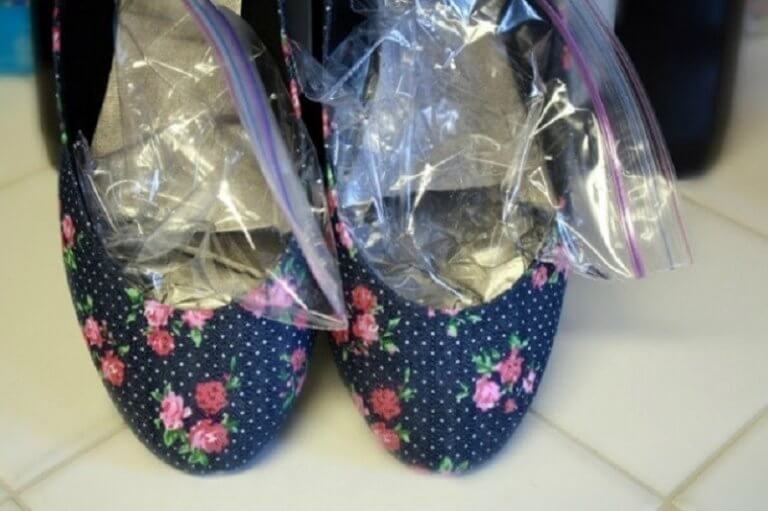
Have you bought a pair of shoes that are a little too tight? As they’ll probably give you blisters, it’s a good idea to try and increase their size a little before you start to wear them.
A simple bag of ice will stretch the material a little and make them more comfortable.
Method
- Half fill two bags with water and seal them well.
- Put one bag in each shoe in the area where they feel tightest, and put them in the freezer.
- When the bags are frozen, remove them, dry off any remaining water, and put on the shoes.
As you can see, there are some really simple tricks to prevent your shoes from giving you blisters.
Choose the option that appeals most to you and use it to prevent this problem.
All cited sources were thoroughly reviewed by our team to ensure their quality, reliability, currency, and validity. The bibliography of this article was considered reliable and of academic or scientific accuracy.
- Clínica Universidad de Navarra. (s.f.). Cómo tratar y prevenir las ampollas de los pies. Consultado el 18 de octubre de 2024. https://www.cun.es/chequeos-salud/vida-sana/consejos-salud/como-tratar-prevenir-ampollas-pies
- Kumar, S., Kalita, S., Basumatary, I. B., Kumar, S., Ray, S., & Mukherjee, A. (2024). Recent advances in therapeutic and biological activities of Aloe vera. Biocatalysis and Agricultural Biotechnology, 57, 103084. https://www.sciencedirect.com/science/article/abs/pii/S1878818124000677
- Nitbani, F. O., Tjitda, P. J. P., Nitti, F., Jumina, J., & Detha, A. I. R. (2022). Antimicrobial properties of lauric acid and monolaurin in virgin coconut oil: a review. ChemBioEng Reviews, 9(5), 442-461. https://onlinelibrary.wiley.com/doi/abs/10.1002/cben.202100050
- Rustan, M. E., Mangeaud, A., & Consig, C. A. (2015). Micosis superficiales: estudio retrospectivo de corte transversal en la ciudad de Córdoba, Argentina. Dermatología Argentina, 21(1), 44-51. https://www.dermatolarg.org.ar/index.php/dermatolarg/article/view/1331
This text is provided for informational purposes only and does not replace consultation with a professional. If in doubt, consult your specialist.








